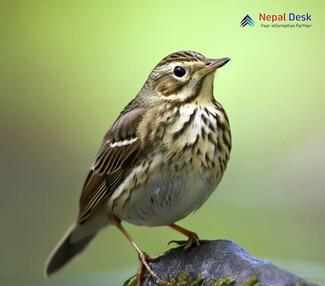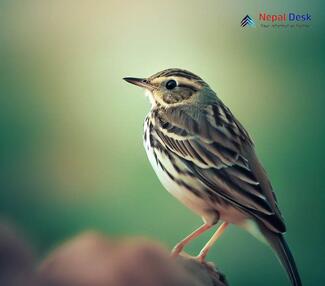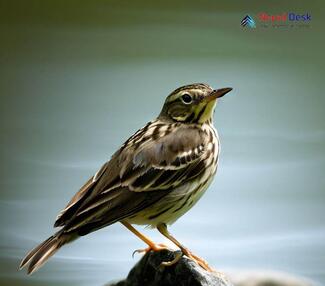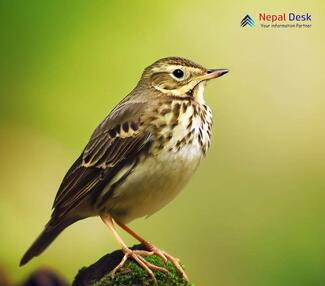The Water Pipit (Anthus spinoletta) is a fascinating bird species, known for its captivating appearance and affinity towards wetland habitats. This small passerine bird is often seen wading through shallow waters and can be found in various parts of the world, including Nepal. In this article, we'll explore all there is to know about the Water Pipit, its unique features, and its presence in Nepal.
Physical Characteristics
The Water Pipit is a small bird with a size range of 15-18 centimeters in length and a wingspan of around 22-26 centimeters. Both males and females generally share similar markings, making it difficult to distinguish between them visually. The bird has a brownish-grey plumage on its upperparts in the non-breeding season, which transitions into a more vibrant black-streaked pattern during the breeding season. Moreover, they possess pale underparts with brown streaking and buff flanks.
Habitat Preferences and Distribution
The habitat preferences of the Water Pipit are quite specific as they commonly inhabit alpine meadows, marshes, wet grasslands, and subalpine zones. These habitats are typically found at high elevations between 1500 meters to 3000 meters above sea level.
Water Pipits have a wide distribution across Europe, Asia, and Northern Africa, with a substantial number being present in Nepal. Here they occupy high-altitude regions like the Annapurna Conservation Area, Sagarmatha National Park, Langtang National Park, and other protected wetland areas throughout the country.
Diet and Feeding Habits
As insectivores by nature, Water Pipits mostly feed on insects found around their preferred habitats. They are known to forage by walking along the muddy or watery edges of wetlands, searching for their prey which includes various aquatic insects, larvae, and invertebrates.
Breeding and Nesting
The breeding season of the Water Pipit begins in late spring and continues until early summer. These birds are monogamous, and they establish their nests on the ground near vegetation or water sources. The nesting sites chosen are typically well-concealed in order to protect the eggs from predators. A female produces a clutch of 4-6 eggs, which she incubates for around two weeks before they hatch.
Conservation Status
The Water Pipit is categorized as a species of "Least Concern" on the International Union for Conservation of Nature's (IUCN) Red List. This indicates that it is not currently facing any significant threats that would warrant concern. However, continued habitat destruction and climate change may pose challenges to this bird's survival in the future.
In conclusion, the Water Pipit (Anthus spinoletta) is an enchanting bird species that call Nepal's high-altitude wetlands home. With its unique breeding habits and affinity for alpine environments, it serves as yet another example of Nepal's rich biodiversity and natural beauty.




